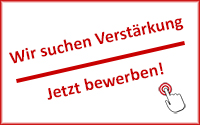Oil cooler
A scissor lift table with a high number of cycles in particular runs the risk that the hydraulic oil will heat up more than is allowed. High temperatures increase the risk of mechanical damage to the hydraulic components, especially the gear pumps. Depending on the application, oil coolers must therefore be used to eliminate this risk.
Oil heating
The intrinsic temperature of hydraulic oils strongly affects their viscosity. For example, the frequently used HLP32 hydraulic oil has a viscosity of 32 mm²/s at 40 °C, whereas the viscosity at 100 °C is only 5.5 mm²/s.
At colder temperatures, the hydraulic oil flows correspondingly more slowly and the oil becomes more viscous. This can be ignored up to a certain degree. However, if the lift table and the power unit are exposed to very cold temperatures, an oil heating system must be used. It is necessary to ensure that the hydraulic oil reaches the required operating temperature.
On site
The term on-site refers to services or materials that the customer have to provide at the installation site. In most cases, this refers to tasks or preliminary work that can be produced more cost-effectively by the customer or another company.
A good example of this is the provision of a crane or forklift during assembly. There is often already a crane on the construction site, which can be used during the assembly and installation period. Without this, an extra crane or forklift would have to be rented. This would involve additional costs for the customer.
Another good example of services to be provided on site is the construction of a lift table pit. As concrete needs several weeks to fully harden, the pit must be constructed long before the lift table is delivered. This would result in additional travel costs, which can be saved if a contractor in the vicinity is contracted.
Operating pressure
In normal operation, the operating pressure indicates the current pressure level.
With scissor lift tables, the pressure level varies depending on the scissor position and the associated lever arm ratios. In a conventional design, the operating pressure is highest in the lowest lift table position and decreases slowly during the lifting process. To assess the correctness of the current operating pressure, the current position of the scissor lift must therefore always be taken into account.
As a rule, the nominal pressure is the maximum pressure, i.e. the pressure when lifting from the lowest position.
Output
The term output can be used to describe both the actual production quantity of a machine, mechanical plant or industrial plant and the maximum possible production quantity.
Overall height
The retracted height of a lift table is called the overall height.
Any superstructures or substructures are taken into account when calculating the overall height.
Overload protection
The general function of overload protection is to protect technical components from excessive mechanical or electrical stress.
Overload protection against an unacceptably high load is particularly important in a lift table. The machine operators often do not know how heavy the load actually is. To ensure that the scissor structure is not subjected to excessive mechanical stress, the lift table manufacturer must ensure that a suitable protective device is used.
A pressure relief valve is sufficient for a scissor lift table that can only be loaded in the bottom position. Simplified goods lifts that can also be loaded in a raised position require an additional sensor to determine the applied load. Pressure switches, which can be set to a defined pressure, are often used for this purpose. If the set pressure is exceeded, the platform cannot move and the lift table control system emits a message that there is an overload. Once the overload has been removed, the lift table platform can move normally again.

